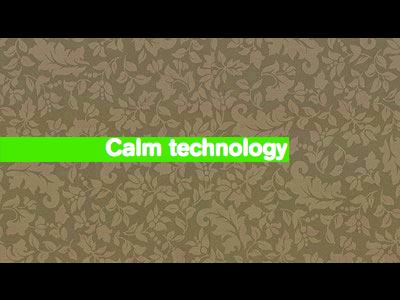
I mention this only because knowing how humans perceive, about the focus and periphery, is something that’s traditional done very badly by technology.
Technology always wants to be the centre. Technology always want to be “really useful”. When my mobile phone rings, it does its best to find that ladder to my focus right away. I can’t put it in my periphery and leave it there.
The movement which brought the ideas of the centre and the periphery, in a sensory way, to technology, was Mark Weiser’s Calm Technology. Weiser was there right at the beginning of a larger movement called ubiquitous computing, which is less of a movement and more of a trend.
Ubiquitous computing, or ubicomp, simply points out that computers, and computer sensors, and displays, and networks, are all getting so cheap that sooner or later they’ll be scattered round the environment, as common as the alphabet and pencils, and just as inexpensive. What then? What do we do when a 2GHz processor costs the same as a dimmer switch (source: Everyware), or teddy-bears are wired to the internet and can tell us about our email, or our houses have pressure pads in the floor and adjust to our mood, or we have glasses that tell us who people are so we don’t need to remember names? Or even: What happens when every product we buy has a code on it that tells us what it is? That’s happening already, but we’re only just beginning to take advantage of it.
Anyway, Mark Weiser’s response to this observation was this: It’d better get out of the way.
Calm technology is about designing technology that moves easily from the periphery to the centre and back again. And because we’re really good at having a lot of information low down on that snakes and ladders board, only absorbing the most important stuff, we can expand our peripheral reach too.